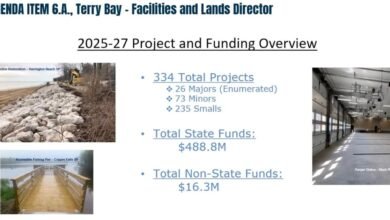Prepares comment on USDA’s proposed milk pricing changes – WisPolitics

GREEN BAY, Wis. – September 12, 2024 – Comments on USDA’s proposed Federal Milk Marketing Order (FMMO) pricing formula changes close on Friday night, Sept. 13 at 11:59 p.m. EDT at the Federal Register Docket AMS-DA-23-0031-0002. American Dairy Coalition has prepared its official comment to file and invites others consider signing on.
USDA’s proposed milk pricing changes could reduce farm milk prices, and substantially so in some regions, where proposed increases in Class III make allowances would take $1.00 per hundredweight from the Class III price, but only half of the cheese and whey processors participated in the voluntary cost of processing survey used to determine this.
In its comment, ADC requests USDA’s reconsideration of these make allowance increases, which would be more fairly evaluated through mandatory, audited cost of processing surveys.
During an ADC webinar on Aug. 29, featured presenter Danny Munch, American Farm Bureau economist, charted the impact for each FMMO of all proposed changes in USDA’s Recommended Decision. The make allowance increases for the Class III and IV products would remove an estimated $1.25 billion annually from manufacturing class prices used in all FMMOs, according to AFBF’s static analysis of 2019-23 pool data.
USDA proposes implementing these make allowance increases for processors right away, but would delay for 12 months the proposed updates on milk composition that would benefit dairy farmers by adding what AFBF estimates is $200 million annually across all FMMO pools.
Because both proposals impact risk management, ADC questions why processors would receive their proposed new income from farmers right away, but farmers would have to wait 12 months for theirs.
The ADC comment also points out that the recommended decision brings back the higher-of method for setting the Class I base price mover, but introduces complexity with a two-mover system that would price extended shelf life (ESL) milk differently. ADC could find no definition in the hearing record for creating this new fifth class of milk. A two-mover system was not part of the hearing’s scope, and was not vetted with opportunities to present evidence.
Why is this important? The 2022 Ag Census showed a record drop in dairy farms, down 39.4% at 24,470 compared with 40,336 in the 2017 Census five years earlier. Large percentage declines in US dairy farms have been an on-going story, but the most recent decline stands out, according to a jointly authored paper by Ohio State University and Illinois State University economists. A major chunk of this five-year loss of dairy farm small businesses between the 2022 and 2017 Censuses includes the first three years in which the average-of method (plus a 74-cent adjuster) has been used to calculate the skim portion of the Class I base price mover instead of the previous higher-of method.
The industry saw the unintended consequences of the legislated change in the Class I mover to a new average-of method in 2019. Now, some milk will be priced using the previous higher-of, after a large volume of hearing testimony showed the losses and disorderly marketing that resulted. However, after the hearing concluded, USDA created a new and undefined class for ESL milk in its recommended decision, which would be priced using the average-of, with a 24-month rolling adjuster and a 12 month lag.
ADC’s comment points out that not only is this more complicated and less transparent, the new ESL class was not defined in the hearing, and the proposed two-mover system was not vetted.
Read ADC’s full 19-page comment here
Individual dairy farmers and organizations may sign on by filling out the form at this link
In addition, ADC has provided tools for farmers to individually comment. To read about how to do that and consider a template to personalize, go to this link
- American Dairy Coalition represents dairy farmers of all sizes. According to USDA, 89% of dairy farms are likely to be small businesses based on the 2022 Census of milk cow herd inventory and sales. We understand regulatory changes are evaluated for impact on small businesses, which USDA defines for dairy farms at a $3.75 million per year income limit to establish an annual milk marketing threshold of 18.3 million pounds, excluding additional monies received by dairy producers. Based on the 2023 average yield per cow and NASS average All-Milk price, a dairy farm with approximately 780 cows or fewer would meet this definition, according to USDA.
Other resources
Source link




